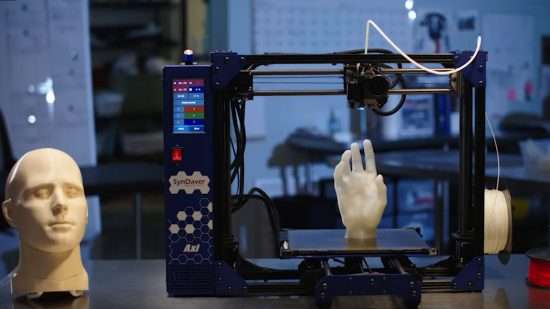3D printer Working Leave a comment
Even the pleasant artists warfare to expose us what real-global items appear like in all their three-dimensional (3-D) glory. Most of the time that doesn’t matter—searching at a picture graph or caricature offers us a good-sufficient concept. But if you’re withinside the enterprise of growing new merchandise and also you want to expose them off to customers or customers, not anything beats having a prototype: a version you may touch, hold and feel. The only hassle is, fashions take a long time to make with the aid of using hand and machines that could make “fast prototypes” price a fortune (as much as a 1/2 of million dollars). Hurrah, then for 3-D printers, which paintings a chunk like inkjets and building up 3-D fashions layer with the aid of using layer at up to ten instances the velocity and a 5th the price. How precisely do they paint? Let’s take a better look!
From hand-made prototypes to fast prototyping
Before there had been things like computer-aided design (CAD) and lasers, fashions and prototypes had been laboriously carved from wooden or caught collectively from little portions of card or plastic. They should take days or maybe weeks to make and usually price a fortune. Getting adjustments or changes made become hard and time-consuming, in particular, if an outdoor version-making organization becomes being used, and that would discourage designers from making upgrades or taking last-minute feedback onboard: “It’s too late!”
With the appearance of higher technology, a concept known as fast prototyping (RP) grew up throughout the Eighties as a way to this problem: it way growing fashions and prototypes with the aid of using greater computerized methods, commonly in hours or days instead of the weeks that conventional prototyping used to take. 3-D printing is a logical extension of this concept wherein product designers make their personal fast prototypes, in hours, the usage of state-of-the-art machines much like inkjet printers.
Imagine constructing a traditional wood prototype of a car. You start out with a block of strong wood and carve inward, like a sculptor, steadily revealing the object “hidden” inside. Or in case you desired to make an architect’s version of a house, you’d assemble it like a real, prefabricated house, likely with the aid of using slicing miniature replicas of the partitions out of card and gluing them collectively. Now a laser should without difficulty carve wooden into form and it’s now no longer past the geographical regions of opportunity to teach a robotic to paste cardboard collectively—however 3-D printers don’t paintings in both of those ways!
A regular 3-D printer could be very just like an inkjet printer operated from a computer. It builds up a 3-D version one layer at a time, from the lowest upward, with the aid of using time and again printing over the equal place in a way referred to as fused depositional modeling (FDM). Working totally automatically, the printer creates a version over a duration of hours with the aid of using turning a 3-D CAD drawing into plenty of two-dimensional, cross-sectional layers—successfully separate 2D prints that take a seat down one on the pinnacle of another, however without the paper in between. Instead of the usage of ink, which might in no way building up to an awful lot volume, the printer deposits layers of molten plastic or powder and fuses them collectively (and to the prevailing structure) with adhesive or ultraviolet light.

